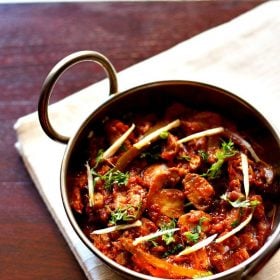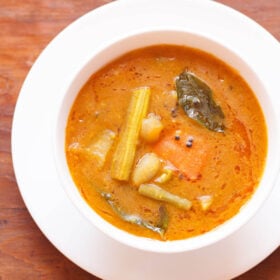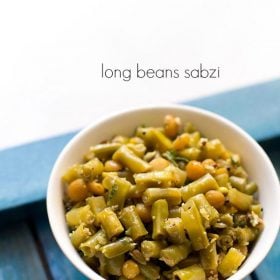Barbati ki Sabji with step by step photos – a simple dry preparation or sabzi made with long beans, spices, coconut and chana dal.
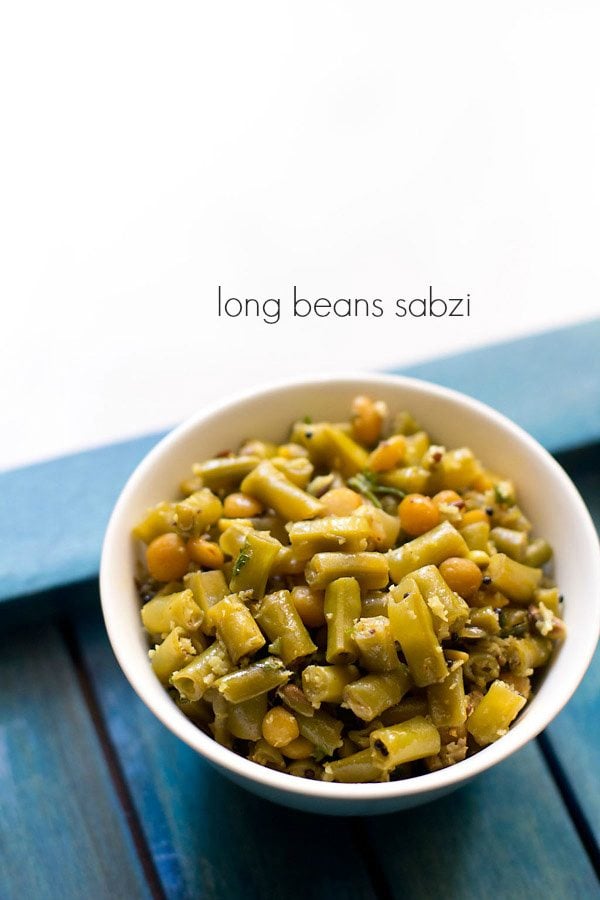
In Hindi language, green long beans are called as barbati or lobia ki phalli and in Marathi known as chawli chya shenga. In English it has various names – yard long bean, long-podded cowpea, asparagus bean, pea bean, snake bean, cow pea beans or Chinese long bean.
You can see a photo of these green yard long beans below. These beans are usually long and hence the name. When cooking with long beans always make sure that they are tender and fresh. The beans that have matured become more drier, stringy, dense and do not taste good.
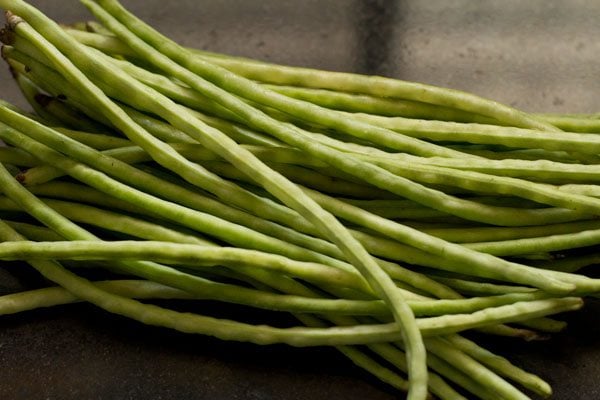
This is a pretty simple and an easy recipe of a Maharashtrian style sabji or bhaji which I often make at home. This sabji tastes very good with roti and can also be served as a side veggie dish with dal and rice.
The Barbati ki Sabji recipe also has chana dal and coconut added to it. You can skip chana dal, but do add coconut. If you do not have fresh coconut, opt to add dessicated coconut.
Being a dry preparation, this sabzi also goes well in the lunch box with some chapati or paratha.
How to make Barbati ki Sabji
Preparation
1. First rinse 2 tablespoons of chana dal in water for a few times and then soak them in ⅓ cup hot for 30 minutes.
Later drain the water and keep the soaked chana dal aside.
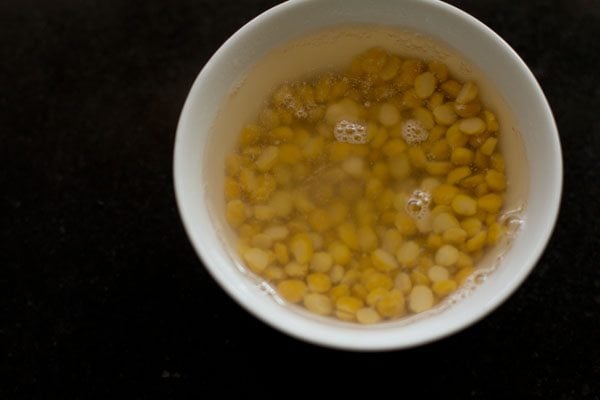
2. Either you can rinse the long beans and then chop or chop them first and then rinse. Whichever method suits you.
To avoid the water soluble nutrients getting rinsed in water, I first rinse the long beans and then chop. Slice off the top and bottom part and discard them. Then chop the beans in small pieces.
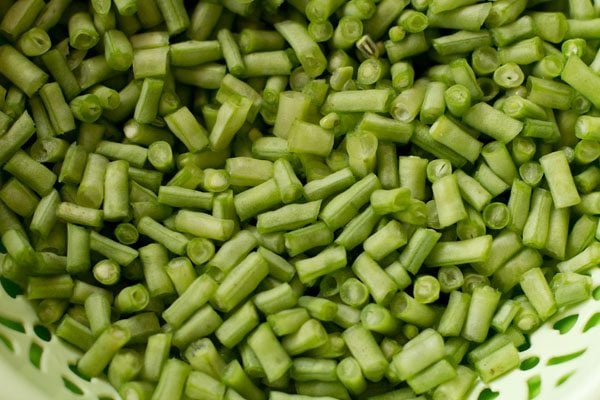
Make Barbati ki Sabji
3. Heat 1.5 tablespoons of oil in a shallow frying pan. Lower the heat and then add ½ teaspoon mustard seeds ½ teaspoon cumin seeds. Let the mustard seeds crackle.
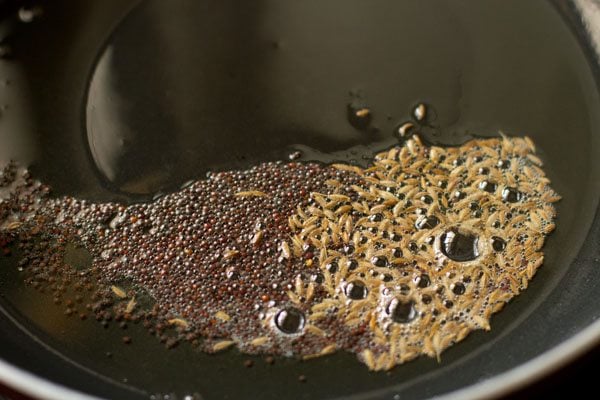
4. Then add ⅓ cup chopped onions, 1 green chili (chopped) and 7 to 8 curry leaves.
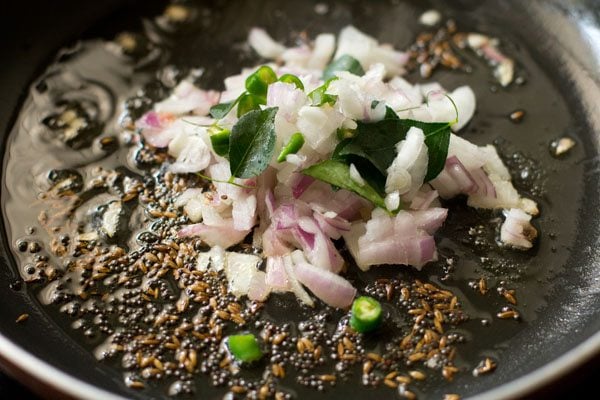
5. Stir well to mix and combine.
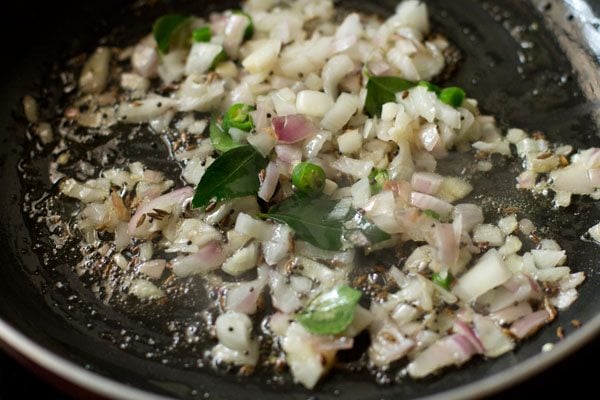
6. Sauté the onions on a low or medium heat till they turn translucent.
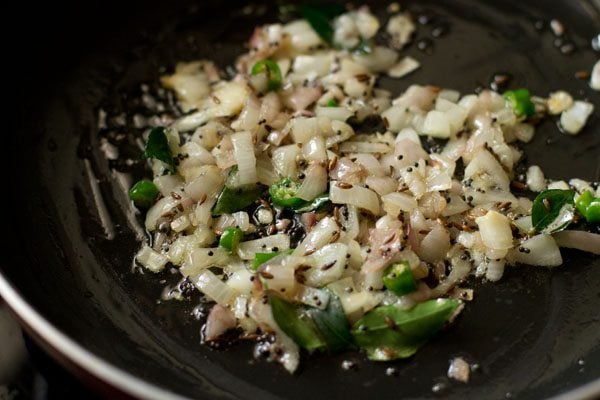
7. Add ¼ teaspoon turmeric powder & a pinch of asafoetida, when the onions become translucent and are softened.
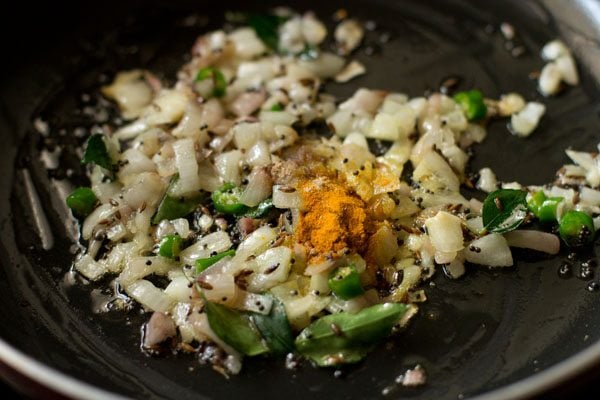
8. Stir quickly and then add the chopped long beans and the soaked chana dal.
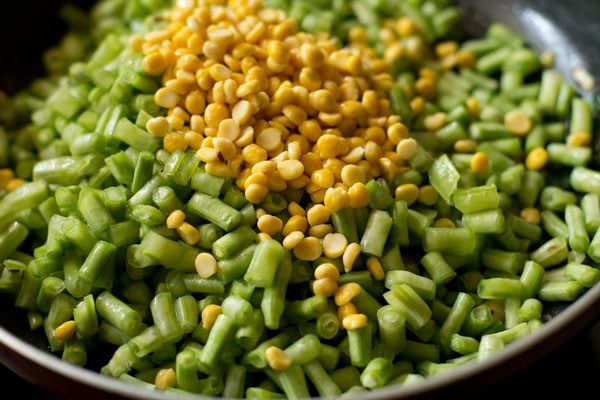
9. Season with salt according to taste.
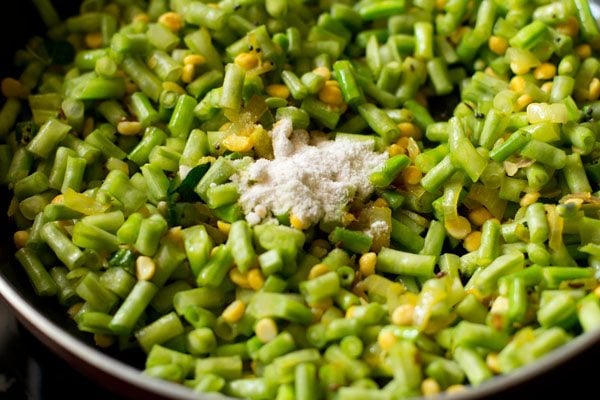
10. Add 1 cup water. Mix very well.
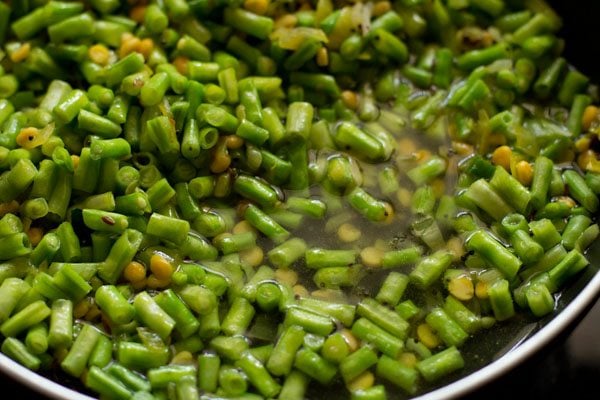
11. Cover the pan with a tight fitting lid and simmer the long beans on a low to medium heat till they are tender and softened.
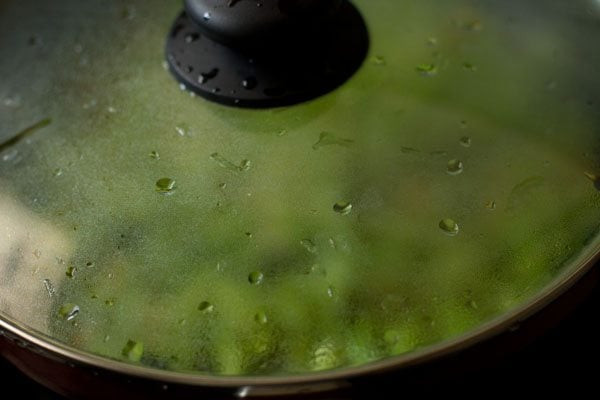
12. Do check the barbati sabzi at intervals to see if the long beans are cooked or not and if the water has dried up.
If the water has dried up and the long beans or chana dal is yet to cook, then add some more water.
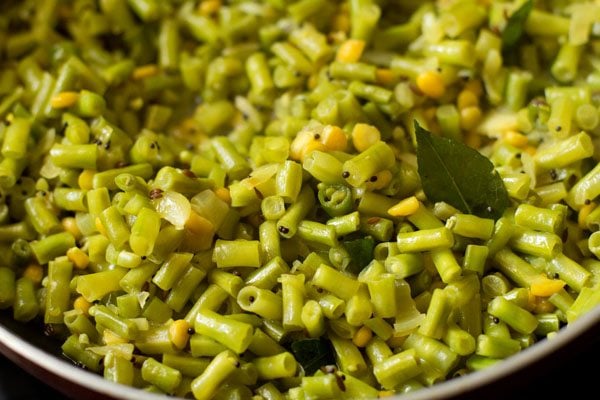
13. When the beans and lentils are softened and all the water has dried up in the sabji, add 4 to 5 tablespoons of fresh grated coconut.
If there is any water then dry the sabzi completely, before adding coconut.
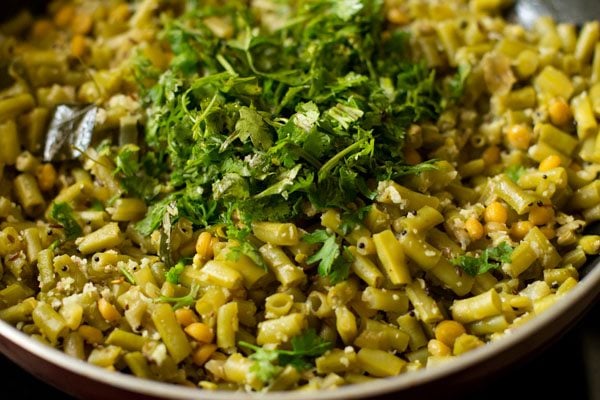
14. Mix very well and then add 3 to 4 tablespoons of chopped coriander leaves. Stir and mix the sabji again. If you want you can even add less amount of coriander leaves – about 1 to 2 tablespoons.
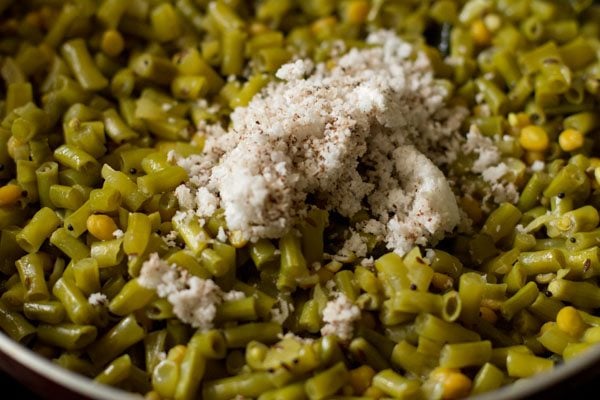
15. Serve Barbati ki Sabji with chapati, paratha or as a side dish with your meals. This sabzi also goes very well as a side dish with sambar-rice or rasam-rice.
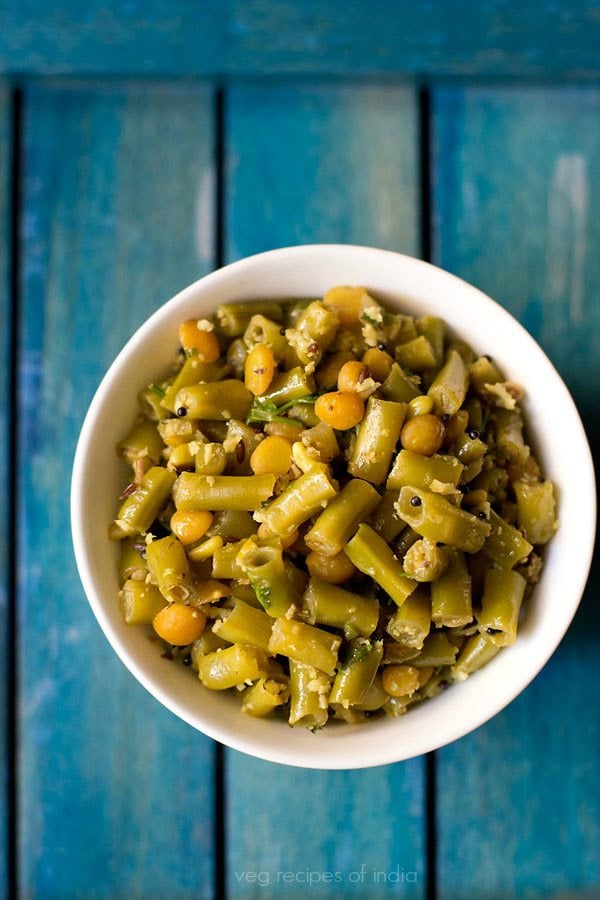
If you are looking for more veggie recipe then do check:
Please be sure to rate the recipe in the recipe card or leave a comment below if you have made it. For more vegetarian inspirations, Sign Up for my emails or follow me on Instagram, Youtube, Facebook, Pinterest or Twitter.
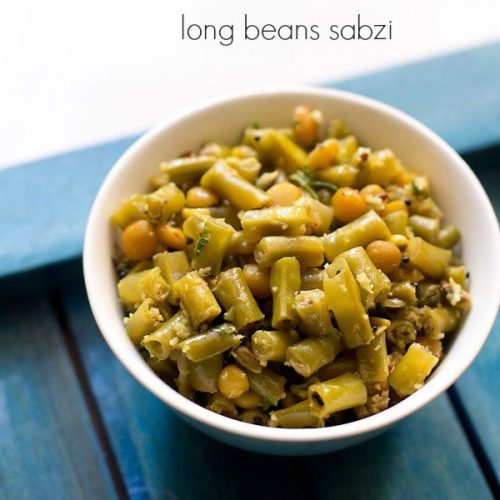
Barbati ki Sabji | Long Beans Recipe
Ingredients
- 1.5 tablespoon oil
- ½ teaspoon mustard seeds
- ½ teaspoon cumin seeds
- ⅓ cup onion (chopped) or 1 medium-sized
- 1 green chili – chopped or ½ to 1 teaspoon, chopped
- 7 to 8 curry leaves
- ¼ teaspoon turmeric powder
- 1 pinch asafoetida (hing)
- 250 grams long beans (barbati or lobia ki phalli)
- 2 tablespoon chana dal – soaked in ⅓ cup hot water
- 1 cup water or add as required
- 3 to 4 tablespoon coriander leaves (chopped)
- 4 to 5 tablespoon fresh grated coconut
- salt as required
Instructions
Preparation
- First rinse chana dal in water for a few times and then soak them in ⅓ cup hot for 30 minutes. Later drain the water and keep the soaked chana dal aside.
- Either you can rinse the beans and then chop or chop them first and then rinse. Whichever suits you. To avoid the water soluble nutrients getting rinsed in water, I first rinse the beans and then chop.
- Slice off the top and bottom part and chop the beans in small pieces.
Making barbati ki sabji
- Heat oil in a shallow frying pan. Lower the heat and add mustard seeds and cumin seeds. Let the mustard seeds crackle.
- Then add chopped onions and green chillies together with curry leaves.
- Saute the onions on a low or medium heat till they turn translucent and are softened.
- Add turmeric powder and asafetida, when the onions become translucent.
- Stir quickly and then add the chopped long beans and the chana dal.
- Season with salt.
- Add 1 cup water. Mix very well.
- Cover the pan with a tight fitting lid and simmer the long beans on a low to medium heat till they are softened.
- Do check the sabji or bhaji at intervals to see if the beans are cooked or not and if the water has dried up. If the water has dried up and the beans or chana dal are yet to cook, then add some more water.
- When the long beans and chana dal are cooked well, softened and the water has dried up in the sabji, add fresh grated coconut. If there is any water then dry the sabzi completely, before adding coconut.
- Mix very well and then add chopped coriander leaves. Stir and mix again.
- Serve Barbati ki Sabji with chapati or as a side dish with dal-rice. This long beans sabji also goes very well as a side dish with sambar-rice or rasam-rice.
Notes
- Remember to use fresh, young and tender long beans.
- Swap fresh coconut with unsweetened desiccated coconut.
- Omit adding chana dal if you do not prefer adding the lentils in the sabji.
- Easily scale the recipe to make for less or more servings.
Nutrition Info (Approximate Values)
This Barbati ki Sabji recipe post from the archives first published on April 2016 has been republished and updated on November 2022.


